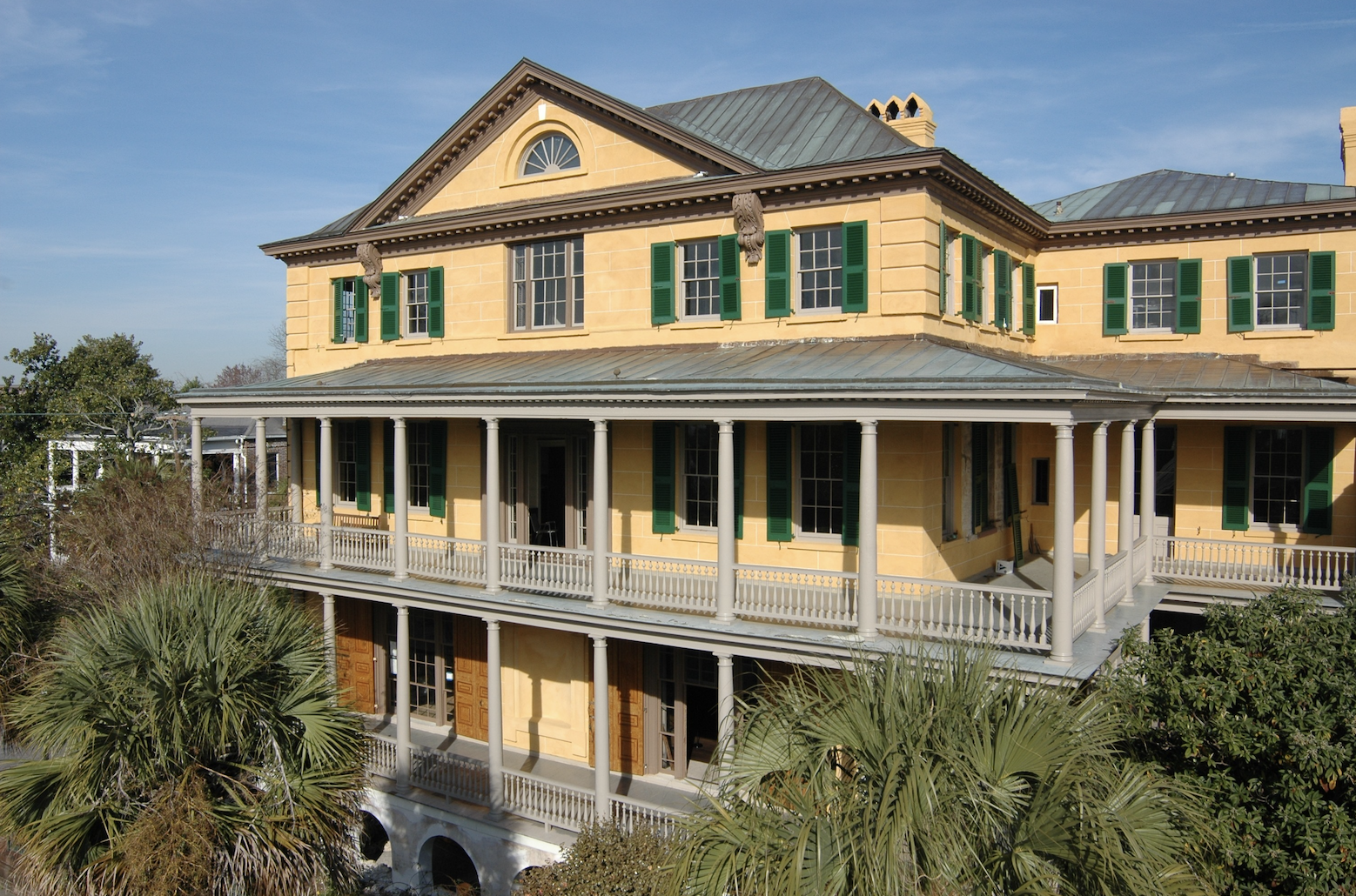Welcome In
A trip to Charleston calls for leisurely strolls through historic neighborhoods — ambling atop cobblestone streets, admiring centuries-old brick and stucco façades, and stealing glances at bloom-filled gardens tucked behind wrought-iron gates. Indeed, part of the Holy City’s endearing appeal is its impeccably preserved historic districts, where whole neighborhoods of 18th- and 19th-century manses shine thanks to many decades of thoughtful stewardship and organized preservation efforts.
While you stroll, you may find yourself wishing you could take a closer look at some of the properties—to step over the threshold and see what’s inside. Thanks to work by the Preservation Society of Charleston—which, established in 1920, was the first of its kind in the United States—as well as the Historic Charleston Foundation, Charleston Museum, and other preservation-minded organizations, several of the oldest and most historically significant homes in Charleston and the surrounding areas are open to public viewing. Whether you are a history buff, design lover, or architecture aficionado, read on for a few of the must-visit house museums around town.
Nathaniel Russell House
If you’re seeking an opulent and artfully restored peek into life in historic downtown Charleston, the Nathaniel Russell House awaits. Located in the heart of Charleston’s famed historic South of Broad neighborhood, this National Historic Landmark is perhaps best known for its grand staircase: a three-story, free-flying, cantilevered masterpiece. Filled with period furnishings and décor, the neoclassical home and its landscaped gardens have been restored as closely as possible to their original 1808 splendor, offering an immersive tour experience.
Nathaniel Russell House (Courtesy of Nathaniel Russell House)
Aiken-Rhett House
Once owned by William Aiken, Jr.,—the governor of South Carolina from 1844 to 1846—this 1820-built home was, at one time, considered among the grandest in Charleston, and remained in the Aiken-Rhett family for 142 years before being sold to the Charleston Museum and opened to the public in 1975. During a tour, you will see elements of the preserved-as-found residence’s original design—including wallpaper, art, and furnishings—as well as the virtually untouched 19th-century slave quarters. Together, they offer a powerful look at life in the urban antebellum South.
Aiken-Rhett House (Courtesy of Charleston Historic Foundation)
McLeod Plantation Historic Site
Charleston’s world-renowned architectural beauty—and the wealth that enabled it—was, of course, made possible due to the unpaid labor of enslaved Africans who worked on area plantations. McLeod Plantation Historic Site—located just across the Ashley River from downtown Charleston on James Island—offers impactful and necessary context to the city’s opulence. On a visit to the 37-acre Gullah/Geechee heritage site, you can tour the McLeod family’s 1851-built main property, as well as a series of restored slave dwellings. Guided tours trace the emergence of Gullah culture in the South Carolina Lowcountry, as well as the history and legacy of the enslaved people who lived and worked on the property.
McLeod Plantation Historic Site
(Courtesy of McLeod Plantation Historic Site)
Edmondston-Alston House
No visit to Charleston is complete without a stroll along the Battery, a bluestone-topped seawall and promenade that stands between the southernmost tip of the downtown peninsula and the waters of the Charleston Harbor. While you’re there, stop by the Edmonston-Alston House, which is one of the oldest residences located along High Battery, or the eastern stretch of the seawall that gazes out toward Sullivan’s Island. Constructed circa-1825, this harborside house museum showcases grand Federal and Greek Revival design, including period silver, furnishings, and decorative arts.
Edmondston-Alston House
(Courtesy of Edmondston-Alston House)
Middleton Place
If you have a green thumb, this National Historic Landmark should top your list. Established in 1741 and located along the Ashley River, Middleton Place is home to America’s oldest landscaped gardens, which were designed following the principles of André Le Nôtre, the classical garden designer who landscaped the Palace of Versailles. In addition to 64 acres of manicured gardens, you can tour the Middleton Place House Museum, which displays centuries-old artifacts, art, furnishings, and documents that tell the story of generations of Middleton Place residents, both free and enslaved.
Middleton Place (Courtesy of Middleton Place)





